The People
>Described by The Great Zimbabwe Guide as “…home to ladies-who-lunch and politicians, accountants and technology whizzes, gardeners and doctors…”, Harare – like most of the rest of the country – is home to the Karanga, Korekore, Manyika, Ndau, Rozwi and Zezuru people. The Tonga people in the Zambezi Valley, the Venda on the border of South Africa and the Shangaam in the Lowveld account for a small percentage (just over one per cent) of the population while non-African people (mainly European or Asian) account for two per cent of the population. But, more important, than the Zimbabwean peoples’ ethnicity is their character.
As a stay at Willow Lodge Harare B&B accommodation will demonstrate, the majority of Zimbabwean people are warm, welcoming, friendly, hard-working and hospitable. There’s an air of optimism in their presence and a genuine sense that they want tourists to leave their Harare hotels with a desire to come back soon.
The Languages
Shona is the first language for the majority of Zimbabwe’s population (two thirds), who live in the Eastern two-thirds of the country which includes the busy, up-and-coming capital of Harare. The country’s ‘second language’, spoken by one in five Zimbabweans, is Northern Ndebele, commonly known as Sindebele. Both languages are steeped in history and culture, dating back over 1,000 years when Bantu-speaking tribes populated the region.
Don’t speak Shona or Sindebele, don’t worry. Due to the country’s lively tourism industry, Harare accommodation staff at guest lodges in Harare, Harare B&B accommodation etc. as well as car hire and vehicle for hire sales consultants either speak English fluently or speak it competently enough to converse effectively.
The Sculpture
Often semi-abstract and minimalist in aesthetic, Shona sculptures are inspired by figures in African folklore and animals unique to the African continent. Carved from local stone, traditional Shona sculpture is popular with tourists and international African art collectors, making this art form – unique to the region – so much more than simply a memento or a trinket from a trip.
Willow Lodge, like other guest lodges in Harare and Harare B&B accommodation is committed to promoting local talent and craftsmanship which is why, if a beautiful, hand-carved Shona sculpture is on your wish list we’ll happily direct you to the best markets, shops and galleries to choose from. We can even offer you a vehicle for hire in Harare with a driver for the day so that you can take full advantage of taking in the city ‘in transit’ while you our driver takes you to the best Shona sculpture shopping spots.
The Culture
Dance, Music and Art are as much a part of what makes Zimbabwe undoubtedly interesting and unmistakably African as it’s wildlife, game parks and world-class Harare B&B accommodation like Willow Lodge.
Made up of a variety of skills including weaving, pottery, sewing and carving, traditional Zimbabwean art is interesting, intricate and as inspired by idols and ancient gods as it is by the country’s landscapes and wildlife. From colourful textiles to hand-painted materials and hand-carved cultural treasures, you’ll be spoilt for choice as equally at a city center market as you will at an Arundel Village art gallery.
If traditional Zimbabwean art is the country’s cultural aesthetic then its traditional music is its cultural soundtrack. Think thumb pianos and marimbas, indigenous beats blended with international rock and pop, local styles of music (like Sungura) given a modern twist by youthful local musicians with global influences.
The Heartbeat
While other guest lodges in Harare and Harare B&B accommodation may encourage its guests to simply use their affordable lodges in Harare as a base camp from which to head out into the game parks from, at Willow Lodge we passionately promote experiencing the capital city in all its gritty, buzzing, contradictory glory – from its art galleries and coffee shops to its street vendors and fashion boutiques, from its agile cyclists to its “emergency taxis”, from its jam-packed city center to its spacious and beautiful north-eastern suburbs.
“Many of Harare’s beautiful spots are open to the public in the form of garden coffee shops and craft centres, and it’s these that I enjoy the most. Enter a house in the suburbs and find yourself surrounded by vivid paintings, intricate beadwork and chocolate cake … yes, please!” – The Great Zimbabwe Guide


